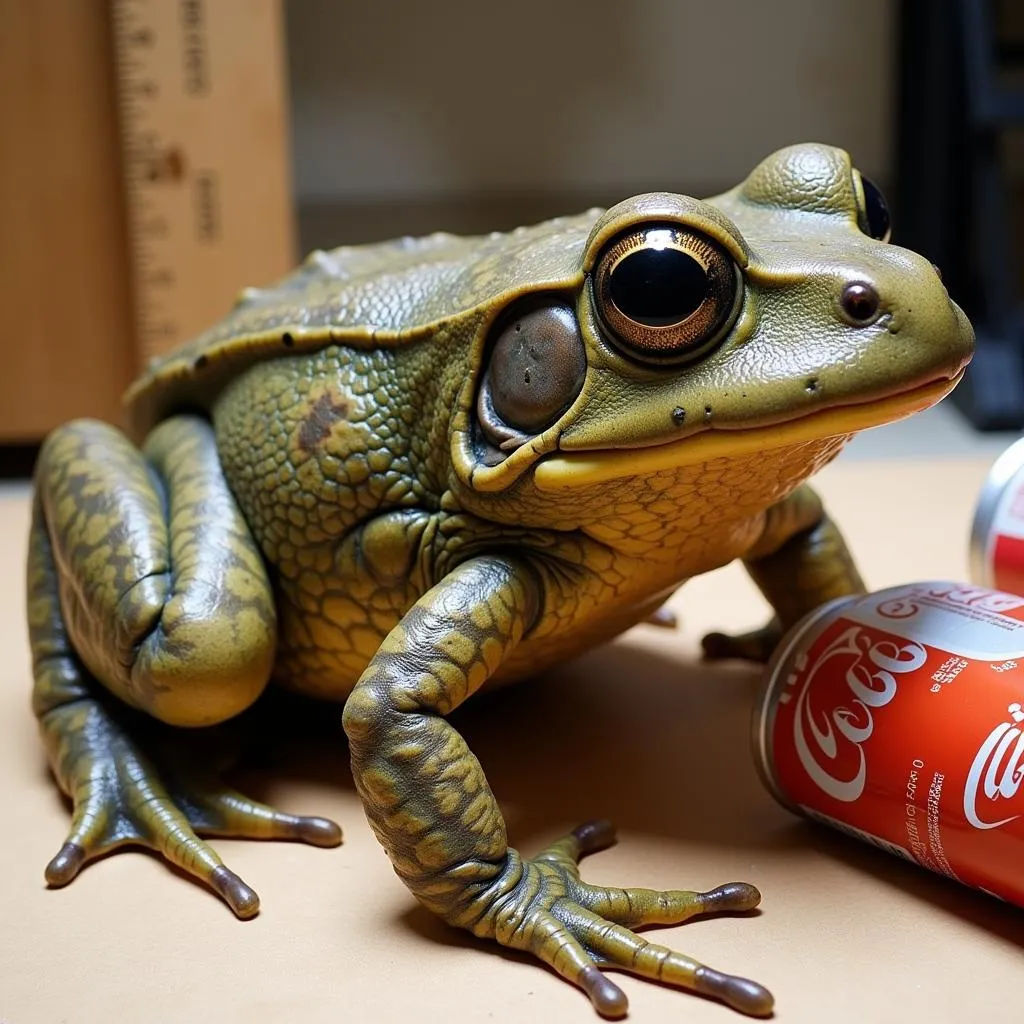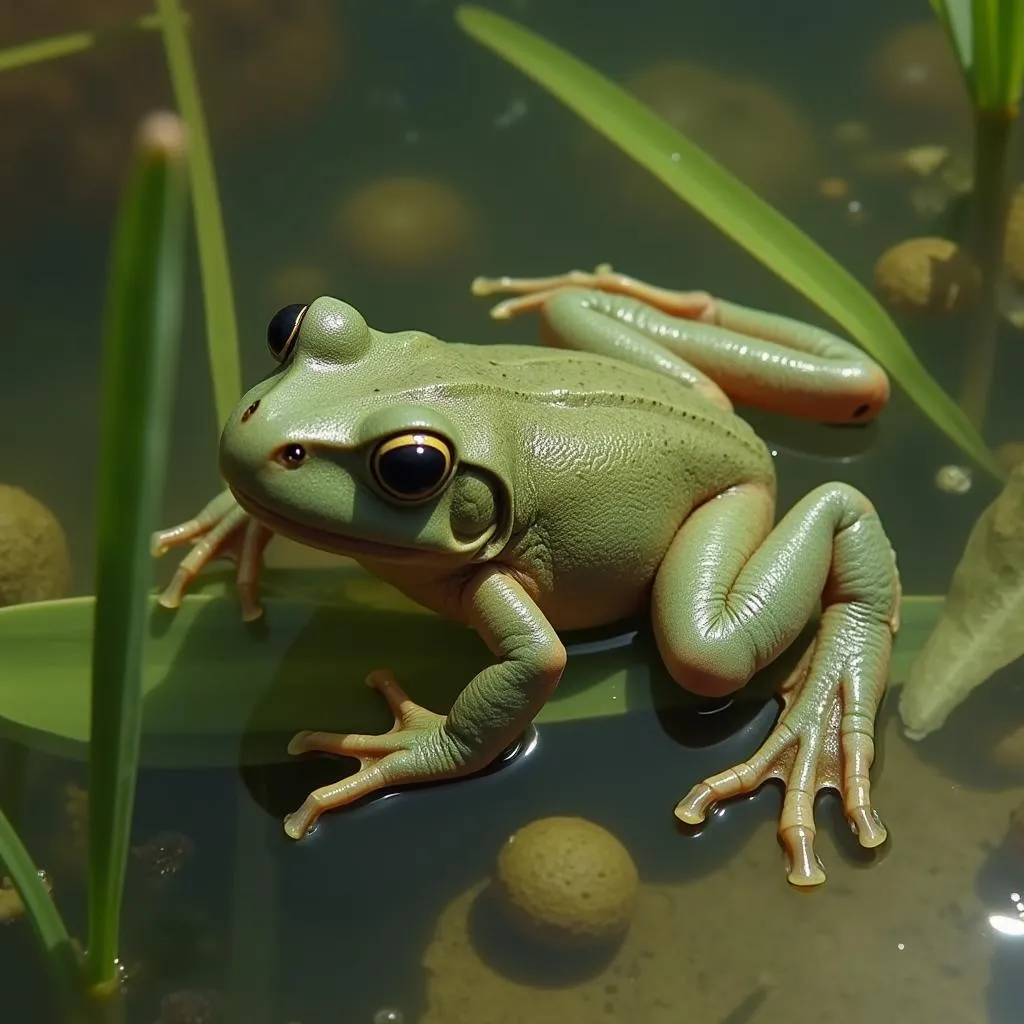About African Frogs: A Diverse and Fascinating Group
Africa is a land of incredible biodiversity, and its frog fauna is no exception. From the giant Goliath frog to the tiny reed frogs, there are over 800 species of frogs found across the continent, each adapted to its own unique niche. This article delves into the fascinating world of African frogs, exploring their diversity, adaptations, and cultural significance.
A Kaleidoscope of Colors and Adaptations
African frogs exhibit a stunning array of colors, patterns, and sizes. Their vibrant hues often serve as camouflage, warning signals, or even tools for attracting mates. The panther toad, for instance, displays striking red and yellow markings that deter predators. Meanwhile, the male painted reed frog, barely an inch long, puffs up its bright yellow throat sac to impress potential partners.
 African Frog Camouflage
African Frog Camouflage
These amphibians have also developed remarkable adaptations to thrive in diverse environments, from arid deserts to lush rainforests. The desert rain frog, a resident of Namibia’s coastal dunes, survives by absorbing moisture from the fog that rolls in from the Atlantic Ocean. In contrast, the hairy frog, found in Central Africa, sports hair-like dermal papillae that increase its surface area, allowing it to absorb more oxygen from the water.
The Goliath Frog: A Gentle Giant
No discussion About African Frogs would be complete without mentioning the African bullfrog goliath frog, the largest frog species on Earth. This behemoth can grow up to 13 inches in length and weigh over 7 pounds! Despite its imposing size, the Goliath frog is a gentle herbivore, primarily feeding on fruits, plants, and insects.
 Goliath Frog Size Comparison
Goliath Frog Size Comparison
These giants are found in the rainforests of Cameroon and Equatorial Guinea, where they play a crucial role in their ecosystem. Sadly, habitat loss and over-harvesting for the pet trade threaten their survival.
Cultural Significance of Frogs in Africa
Frogs hold a significant place in many African cultures. They are often associated with rain, fertility, and transformation. In some communities, frogs are revered as sacred animals, believed to possess spiritual powers.
Folklore and traditional stories often feature frogs as wise tricksters or bringers of good fortune. These tales often highlight the importance of respecting nature and understanding the interconnectedness of all living things.
The African Clawed Frog: From Pregnancy Tests to Invasive Species
The African clawed frog, a small, aquatic species, has played a unique role in scientific research. In the mid-20th century, scientists discovered that these frogs could be used for early pregnancy detection. By injecting a woman’s urine into a female African clawed frog, researchers could determine pregnancy based on whether the frog laid eggs. This method, though now considered outdated, revolutionized pregnancy testing.
 African Clawed Frog in Water
African Clawed Frog in Water
However, the widespread use of African clawed frogs in labs and their subsequent release into the wild have led to them becoming an invasive species in many parts of the world. They are known to outcompete native amphibian populations, posing a threat to biodiversity.
For more in-depth information on their diet, you can read about African clawed frog diet and African clawed frog food. You can also learn more about the African clawed frog pregnancy test.
The Future of African Frogs
African frogs face numerous threats, including habitat loss, pollution, climate change, and disease. As key indicators of environmental health, their decline serves as a stark warning about the fragility of African ecosystems.
Conservation efforts are underway to protect these fascinating creatures and their habitats. By raising awareness, supporting responsible tourism, and engaging in scientific research, we can ensure that future generations inherit a world where African frogs continue to thrive.
Conclusion
From the towering Goliath frog to the diminutive reed frog, African frogs represent a vital part of the continent’s rich biodiversity. Understanding and appreciating these amphibians is crucial for conserving their unique adaptations, cultural significance, and ecological importance for generations to come.
Remember, for any inquiries or assistance, our team is available 24/7. Contact us at +255768904061, kaka.mag@gmail.com, or visit us in Mbarali DC Mawindi, Kangaga, Tanzania.

